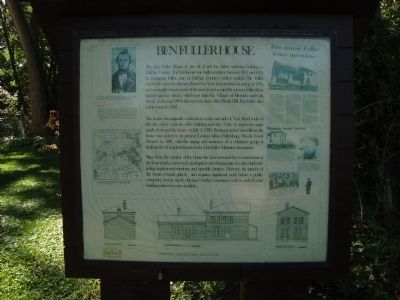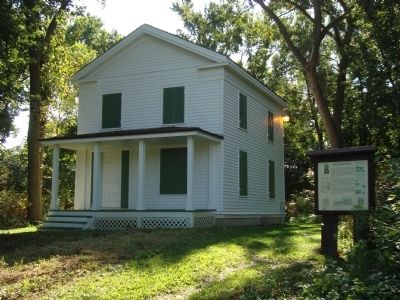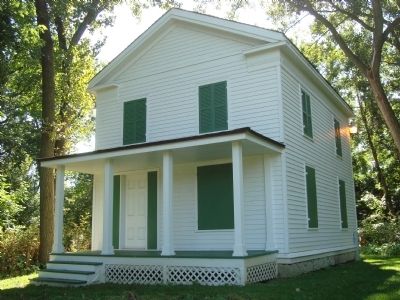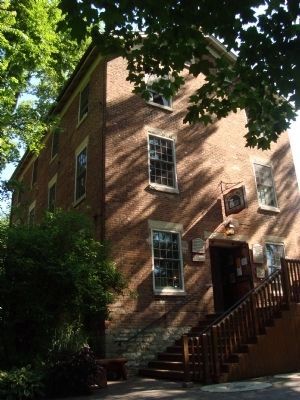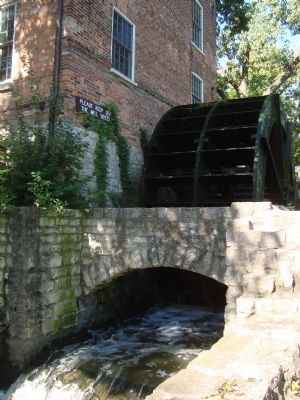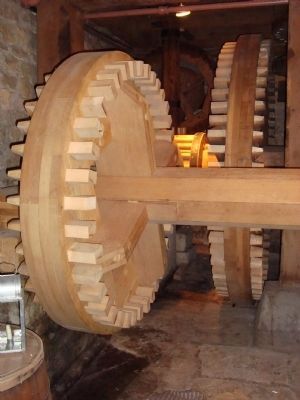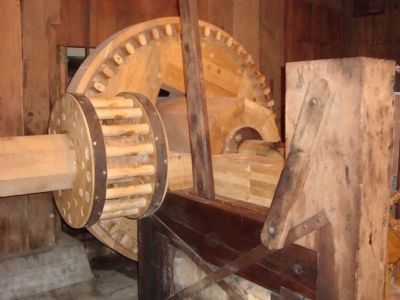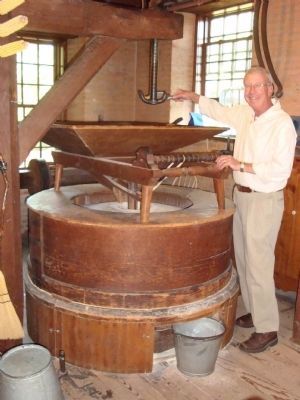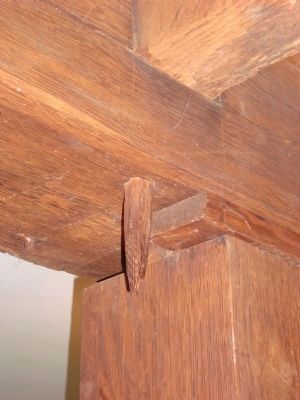Ben Fuller House
Graue Gristmill
The house was originally constructed on the east side of York Road south of this site, where a private office building now sits. A fire of suspicious origin nearly destroyed the house on July 4, 1980. Facing proposed demolition, the house was moved to its present location within Fullerburg Wood Forest Preserve in 1981, with the urging and assistance of a volunteer group of dedicated local residents known as the Ben Fuller Museum Association.
Since then, the exterior of the house has been restored by reconstruction of the front porch, a new roof, metal gutters and downspouts, wooden clapboard siding, replacement windows, and operable shutters. However, the interior of the house remains gutted, and requires significant work before a public occupancy permit can be obtained. Further restoration work
is on-hold until funding sources become available.Topics and series. This historical marker is listed in this topic list: Notable Buildings. In addition, it is included in the Civilian Conservation Corps (CCC) series list. A significant historical month for this entry is July 1875.
Location. 41° 49.179′ N, 87° 55.6′ W. Marker is in Oak Brook, Illinois, in DuPage County. Marker can be reached from the intersection of York Road and Spring Road. This marker and the Ben Fuller House is located in a park on the east side of York Road. Touch for map. Marker is at or near this postal address: 3801 York Road, Oak Brook IL 60523, United States of America. Touch for directions.
Other nearby markers. At least 8 other markers are within 4 miles of this marker, measured as the crow flies. Wolf Road Prairie (approx. 1˝ miles away); La Grange Park Veterans Memorial (approx. 2.9 miles away); Memorial Park (approx. 2.9 miles away); Scalabrini Fathers (approx. 3 miles away); a different marker also named La Grange Park Veterans Memorial (approx. 3 miles away); Queen of Heaven Cemetery (approx. 3 miles away); National Jewish War Memorial (approx. 3.4 miles away); a different marker also named Memorial Park (approx. 3.4 miles away).
Regarding Ben Fuller House. A short walk from the Ben Fuller House is the Graue Gristmill, established in 1852. Both sites share the same parking lot.
History
“[Fredrick] Graue, born in Germany, came to the United States and settled in Fullersburg, Illinois. He purchase land [on Salt Creek] and began to build a waterwheel gristmill. It took five years to construct using brick made from clay taken from the Graue farm and fired in a kiln near the site, and white oak timbers cut from a tract along the I & M canal near Lemont...
“The German miller, who had sought freedom in the New World, was said to have provided a haven for runaway slaves in the cellar of the mill. It became a regular stop on the Underground Railroad that transported slaves on their journey to freedom in Canada...
“Although three generations of the Graue family operated the mill for 60 years, more advanced technology eventually caused the Mill to shut down. After being abandoned for several years the building was added to the properties of the DuPage County Forest Preserve District. In 1934, the Civilian Conservation Corps began to restore the building and the waterwheel. The restoration was completed in 1943 but the building never opened to the public. In 1950, the mill property was leased to the DuPage Graue Mill Corporation, an organization formed by local residents, who repaired the waterwheel and gear system, making the old mill turn again, and opened the museum in 1951.”
Extracted from the Graue Mill & Museum brochure.
Additional keywords. Civilian Conservation Corps
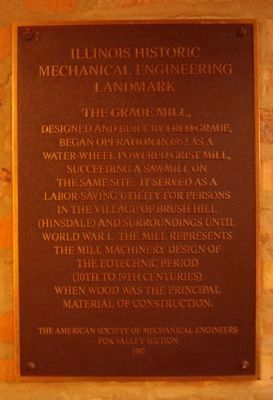
Credits. This page was last revised on June 16, 2016. It was originally submitted on September 22, 2011, by Barry Swackhamer of Brentwood, California. This page has been viewed 2,294 times since then and 119 times this year. Last updated on October 9, 2011, by Barry Swackhamer of Brentwood, California. Photos: 1, 2, 3. submitted on September 22, 2011, by Barry Swackhamer of Brentwood, California. 4, 5, 6, 7, 8, 9, 10. submitted on October 9, 2011, by Barry Swackhamer of Brentwood, California. • Bill Pfingsten was the editor who published this page.
